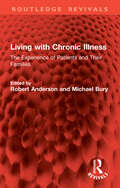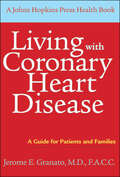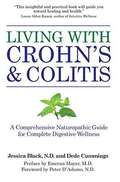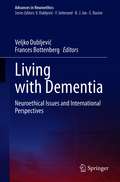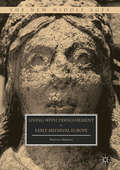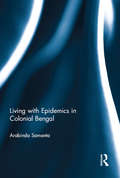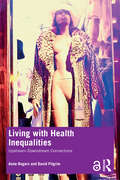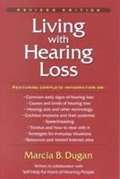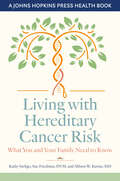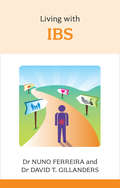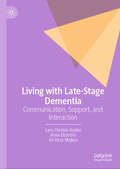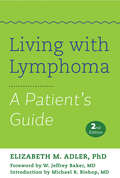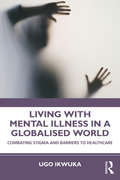- Table View
- List View
Living with Chronic Illness: The Experience of Patients and Their Families (Routledge Revivals)
by Michael Bury Robert AndersonFirst published in 1988, Living with Chronic Illness presents a vivid account of the reality of life with chronic illness – from the perspective of patients and their families. The authors look at the expectations, priorities, and problems of those most affected by chronic illness, and examine the strategies they have developed to cope with their considerable disadvantages. The experience of carers, the ways in which their problems change over time, are also major themes in the book.The book looks at the everyday life of people with the following conditions: stroke, renal failure, multiple sclerosis, Parkinson’s disease, arthritis, heart attack, epilepsy, rectal cancer, psoriasis, and diabetes. In each case, an overview of the consequences of a particular illness is presented, before discussion of specific problems in daily life – maintaining family relationships, managing treatment regimes, coping with work and home commitments, and living with bodily change and social stigma.This volume will be of importance to all those concerned with providing support and planning care for the chronically ill – in the health and social services and in voluntary organizations. Students of medical sociology, policy makers and planners will also find the insights and research presented here valuable in the understanding of the daily life of people with chronic illness. It will also be of use for those in professional training, in nursing, social work, general practice and related areas.
Living with Coronary Heart Disease: A Guide for Patients and Families (A Johns Hopkins Press Health Book)
by Jerome E. GranatoCoronary heart disease kills more people in the United States than any other heart disorder, and it is the leading cause of death among American women. Jerome E. Granato, a distinguished cardiologist with more than twenty-five years of experience, has created an authoritative and accessible guide to this common condition, providing patients and their families with insight and advice. Dr. Granato begins by describing the basic science of the disease, known also as atherosclerosis, in which arteries become clogged and damaged. He then explains who is at risk and how the disease is detected and diagnosed. He covers all the treatment options, from medications to surgery, and answers such questions as: • How do I know if I have coronary heart disease?• What is a heart attack?• Does my condition need to be treated with surgery?• What are the benefits and risks of balloon angioplasty?• What are stents and how do they work?• How can I manage my condition for the future?He addresses the needs of specific populations, and concludes by discussing how a healthy diet and regular exercise can influence health before and after treatment and how it can help prevent disease. Even after coronary heart disease is diagnosed, its course can be modified. This valuable resource will help patients and their families make some of the most important health care decisions they will ever face.
Living with Crohn’s & Colitis: A Comprehensive Naturopathic Guide for Complete Digestive Wellness
by Jessica Black Dede CummingsApproximately 1. 5 million people in the United States alone are afflicted with inflammatory bowel disease (IBD), a category of illnesses that includes Crohn's disease and ulcerative colitis, and that number is steadily growing.
Living with Dementia: Neuroethical Issues and International Perspectives (Advances in Neuroethics)
by Veljko Dubljević Frances BottenbergThis book addresses current issues in the neuroscience and ethics of dementia care, including philosophical as well as ethical legal, and social issues (ELSIs), issues in clinical, institutional, and private care-giving, and international perspectives on dementia and care innovations. As such, it is a must-read for anyone interested in a well-researched, thought-provoking overview of current issues in dementia diagnosis, care, and social and legal policy. All contributions reflect the latest neuroscientific research on dementia, either broadly construed or in terms of the etiologies and symptoms of particular forms of dementia. Given its interdisciplinary and international scope, its depth of research, and its qualitative emphasis, the book represents a valuable addition to the available literature on neuroethics, gerontology, and neuroscientific memory research.
Living with Disfigurement in Early Medieval Europe
by Patricia SkinnerThis book is open access under a CC-BY license. This book examines social and medical responses to the disfigured face in early medieval Europe, arguing that the study of head and facial injuries can offer a new contribution to the history of early medieval medicine and culture, as well as exploring the language of violence and social interactions. Despite the prevalence of warfare and conflict in early medieval society, and a veritable industry of medieval historians studying it, there has in fact been very little attention paid to the subject of head wounds and facial damage in the course of war and/or punitive justice. The impact of acquired disfigurement --for the individual, and for her or his family and community--is barely registered, and only recently has there been any attempt to explore the question of how damaged tissue and bone might be treated medically or surgically. In the wake of new work on disability and the emotions in the medieval period, this study documents how acquired disfigurement is recorded across different geographical and chronological contexts in the period. This book is open access under a CC-BY license.
Living with Epidemics in Colonial Bengal
by Arabinda SamantaMaking epidemics in colonial Bengal as its entry point and drawing heavily on social, cultural and linguistic anthropology to understand the functions of health experiences, distribution of illness, prevention of sickness, social relations of therapeutic intervention and employment of pluralistic medical systems, the book interrogates the social construction of medical knowledge, politics of science, and the changing paradigm of relationship between health of the individual and the prerogatives of larger colonial economic formations. Smallpox, plague, cholera and malaria which visited colonial Bengal with epidemic vengeance, caught the people unaware, killed them in thousands, and changed the society and its demographic structures. The book shows how sometimes through mutual adaptation but more often by cultural contestation, people pulled on with their microbial fellow travellers, and how illness became metaphor for the social dangers of improper code of conduct, to be corrected only through personal expropriation of the sin committed, or by community worship of the deity supposedly responsible for it. As a result, Western medical science was often relegated to the background, and elaborate rites and rituals, supposedly having curative values, came to the forefront and were observed with much community fanfare. Epidemics were also interpreted as outcome of politically incorrect moves made by the ruling power. To right the wrongs, people very often resorted to social protest. The protest by the literati went sometimes muted when its members seem to be beneficiaries of the colonial government, but it turned out to be all the more violent when the people, who had no private axe to grind, took up the cudgel to fight it out.
Living with Food Intolerance
by Alex GazzolaIdentify troublesome foods and find the diet that suits you. Food intolerance is common and involves an adverse reaction to a particular food. Far more people suffer from food intolerance than they do from food allergy, and it's important to distinguish the two. This book will cover: our relationship with food - historical background; what food intolerance is and isn't; difference between intolerance and allergy; other problems with foods - aversions, phobias, food poisoning; types, symptoms and possible causes of intolerance; how to seek an accurate diagnosis; managing and living with your intolerance; preventing recurrences.
Living with Food Intolerance
by Alex GazzolaIdentify troublesome foods and find the diet that suits you. Food intolerance is common and involves an adverse reaction to a particular food. Far more people suffer from food intolerance than they do from food allergy, and it's important to distinguish the two. This book will cover: our relationship with food - historical background; what food intolerance is and isn't; difference between intolerance and allergy; other problems with foods - aversions, phobias, food poisoning; types, symptoms and possible causes of intolerance; how to seek an accurate diagnosis; managing and living with your intolerance; preventing recurrences.
Living with Frailty: From Assets and Deficits to Resilience
by Shibley RahmanIncreasingly, we question ‘what makes us healthy?’, as well as ‘what makes us ill?’. What does this shift mean for frailty? Almost wholly defined in negative terms, the term ‘frail’ tends to refer to a group of older people who are at highest risk of adverse outcomes such as falls, infections, disability, admission to hospital or the need for long-term care. This ground-breaking book takes a holistic approach to frailty. It connects the medical literature with the wider social science discourse on ageing, and focuses on promoting wellbeing and the building up of strengths. Living with Frailty draws together the latest biomedical evidence and good practice in this emerging area and explores ideas about assets and resilience, the role of society and the social model of disability in relation to frailty, arguing that insufficient attention is paid to positive action such as developing bone strength, maintaining good nutrition and exercising. Chapters look at: existing models of frailty person-centred care assessing frailty and quality of life how falls, and fear of falls, relate to discussions of frailty delirium and frailty the environment and frailty sarcopenia. Living with Frailty is an important introduction and reference for all practitioners, researchers and students with an interest in frailty, wellbeing and social approaches to health. Forewords by Professors Ken Rockwood, Dalhousie University, and Adam Gordon, Nottingham University.
Living with Gluten Intolerance: How To Be Separate And Connected
by Jane FeinmannGluten intolerance is poorly understood by doctors and frequently misdiagnosed, for example as irritable bowel disorder. This book gives clear information on both coeliac disease and gluten intolerance, explains how they differ from other digestive disorders, and looks at possible treatments as well as self-help measures.
Living with Gluten Intolerance: How To Be Separate And Connected
by Jane FeinmannGluten intolerance is poorly understood by doctors and frequently misdiagnosed, for example as irritable bowel disorder. This book gives clear information on both coeliac disease and gluten intolerance, explains how they differ from other digestive disorders, and looks at possible treatments as well as self-help measures.
Living with HHT: Understanding and Managing Your Hereditary Hemorrhagic Telangiectasia (A Johns Hopkins Press Health Book)
by Sara PalmerEverything you need to know about nosebleeds, arteriovenous malformations, and other symptoms of HHT.Hereditary Hemorrhagic Telangiectasia (HHT) is a rare genetic disorder that causes blood vessel abnormalities in the nose, skin, gastrointestinal tract, lungs, brain, and liver. Nosebleeds are the most common symptom of HHT, but abnormal vessels in other organs, if they are not diagnosed and treated, can lead to serious medical complications, including stroke, hemorrhage, anemia, and brain abscess. Psychologist Sara Palmer, who has HHT herself and is an expert in helping people cope with health conditions, draws on current research as she thoroughly describes the symptoms of HHT, explains how the diagnosis is made (and often missed), and details treatment options. While addressing the medical aspects of HHT, Palmer also reveals how people affected by the disorder can maintain their emotional health, take care of family members, and live life as fully as possible. Enriched with illustrations, personal stories of people living with HHT, a glossary, and contact information for the HHT Centers of Excellence (which provide coordinated medical treatment for people with the disorder), Living with HHT is a complete resource for individuals with HHT and their families. This guide is also essential for health professionals seeking more information about this underdiagnosed disease.
Living with Health Inequalities: Upstream–Downstream Connections
by David Pilgrim Anne RogersThis book explores how people encounter, understand, live with and respond to health risks associated with social, economic and political inequality. Complementing a traditional public health approach, the book moves beyond a focus on categories of morbidity and their structural causes. Instead, it focuses on everyday understandings and actions for people living in unequal social conditions. Making use of a variety of case studies related to physical and mental health, the authors emphasise interpersonal relationships, biographical meanings and the daily tactics of ‘getting by’. These are recurrently linked to the social-structural aspects of particular times and places. The book: Draws upon, applies and extends the biopsychosocial approach, which is well known to students of public health. Respects and gives due weight to the experience in context of people who live with health inequalities, in domestic and local settings. Explores notions of personal agency and the contingencies of everyday life, in order to offer a focused psycho-social compliment to a public health tradition dominated by top-down reasoning. This is an important read for all those seeking to understand the complexities of health inequalities holistically in their studies, research and practice. The book brings together thinking in the fields of public health, sociology, mental health and social policy.
Living with Health Inequalities: Upstream–Downstream Connections
by David Pilgrim Anne RogersThis book explores how people encounter, understand, live with and respond to health risks associated with social, economic and political inequality. Complementing a traditional public health approach, the book moves beyond a focus on categories of morbidity and their structural causes. Instead, it focuses on everyday understandings and actions for people living in unequal social conditions. Making use of a variety of case studies related to physical and mental health, the authors emphasise interpersonal relationships, biographical meanings and the daily tactics of ‘getting by’. These are recurrently linked to the social-structural aspects of particular times and places.The book: Draws upon, applies and extends the biopsychosocial approach, which is well known to students of public health. Respects and gives due weight to the experience in context of people who live with health inequalities, in domestic and local settings. Explores notions of personal agency and the contingencies of everyday life, in order to offer a focused psycho-social compliment to a public health tradition dominated by top-down reasoning. This is an important read for all those seeking to understand the complexities of health inequalities holistically in their studies, research and practice. The book brings together thinking in the fields of public health, sociology, mental health and social policy.The Open Access version of this book, available at http://www.taylorfrancis.com, has been made available under a Creative Commons [Attribution-Non Commercial-No Derivatives (CC-BY-NC-ND)] 4.0 license.
Living with Hearing Loss
by Marcia B. Dugan Howard E. StonePeople who are hard of hearing and their friends and relatives now can learn all they need to know about hearing loss in this easy to read guide. Newly updated and revised, Living with Hearing Loss takes the reader from A to Z on the kinds and causes of hearing loss and its common early signs. Written by Marcia B. Dugan, past president of Self Help for Hard of Hearing People (SHHH), this straightforward book provides thorough information on seeking professional evaluations and complete descriptions of hearing aids and other assistive technologies. Enhanced sections on the potential of cochlear implants and dealing with tinnitus distinguishes this very useful handbook. Readers also can take advantage of updated information on relevant Internet sites and a new list of resources on dealing with hearing loss. Living with Hearing Loss also suggests strategies for everyday situations and times of emergency. Chapters on speechreading, oral interpreters, assertive communication, and other tips for improving communication can enable people with hearing loss to make changes at work, home, and while traveling to cope with most situations. It can raise significantly the quality of the lives of hard of hearing people while also helping them to avoid dependency upon others.
Living with Hereditary Cancer Risk: What You and Your Family Need to Know (A Johns Hopkins Press Health Book)
by Sue Friedman Kathy Steligo Allison W. KurianThe most comprehensive guide available on hereditary cancers, from understanding risk, prevention, and genetic counseling and testing to treatment, quality of life, and more.Up to 10 percent of cancers are caused by inherited mutations in specific genes. Finding out that you or your loved ones may be at increased risk of developing cancer because of a genetic mutation raises a lot of questions: Is cancer inevitable? Is there anything I should do differently in my life? Will my children also be at higher risk of cancer? Should I have preemptive treatments or surgery? This comprehensive guide provides answers to these questions and more. Written by three passionate patient advocates, this book is a compilation of the trusted information and support provided for more than two decades by Facing Our Risk of Cancer Empowered (FORCE), the de facto voice of the hereditary cancer community. Combining the latest scientific research with national guidelines, expert advice, and compelling patient stories, the book offers previvors (those who have a mutation but have never been diagnosed), survivors, and their families the guidance they need to face the unique physical and emotional challenges of living in a high-risk body.An ideal resource for genetic counselors, physicians, nurses, advocates, and others who support and care for the hereditary cancer community, Living with Hereditary Cancer Risk also provides coverage of • signs of inherited cancer risk in a family;• the value of genetic counseling and testing;• mutations in BRCA, Lynch Syndrome, and other genes that elevate cancer risk; • risk-reducing strategies; • traditional treatments and newer personalized approaches, including immunotherapies and PARP inhibitors; • nationally recommended guidelines for prevention, early detection, and treatment; • insurance coverage and discrimination protections; and• coping with sexual health, fertility, menopause, and other quality of life issues.
Living with IBS
by Nuno FerreiraIf you have Irritable Bowel Syndrome (IBS), you're not alone - it affects up to 20 per cent of the population in the Western world. In fact, it is so widespread that some specialists have called it 'the common cold of the gastrointestinal illnesses'. Medical treatments are only moderately effective, and many experts now agree that the focus should be on improving quality of life for people with this condition. Living With IBS uses the principles of Acceptance and Commitment Therapy (ACT) to help people overcome the distress associated with IBS and to live a more vital and fulfilling life.
Living with Juvenile Diabetes: A Practical Guide for Parents and Caregivers
by Victoria PeurrungIn Living with Juvenile Diabetes, author Victoria Peurrung, mother to two children with juvenile diabetes, provides answers and coping strategies for families everywhere who are struggling with juvenile diabetes. Living with Juvenile Diabetes offers practical hints and ideas for parents, teachers, coaches and other caregivers who deal with children with Type 1 diabetes, as well as how to help their child deal with the condition on a daily basis. Read Living with Juvenile Diabetes for: * The latest facts and treatments * How to deal with the emotional roller-coaster * Step-by-step instructions for preparing insulin and giving injections * Tips on exercise and nutrition * Recipes, supplies, research trends and much more!
Living with Kidney Stones: Complete Guide to Risk Factors, Symptoms & Treatment Options (Living with)
by Samantha BowickTHE MOST UP-TO-DATE INFORMATION ON TREATING KIDNEY STONESLiving with Kidney Stones is a health resource for anyone who has ever suffered with the pain of kidney stones.One in 10 individuals will suffer from kidney stones at some point in their life. Composed of hard, painful mineral deposits forming inside the kidneys, these stones are both crippling and potentially chronic. Thankfully, patients can take action to reduce their chances of developing or redeveloping kidney stones by following a good diet, observing proper self-care, and adopting a comprehensive wellness plan.To that end, Living with Kidney Stones offers the most up-to-date information on this illness, paired with heartfelt insight from an actual kidney stone sufferer.Living with Kidney Stones also includes:• Easy-to-understand information on types and causes of kidney stones• The latest information on kidney stone testing• Traditional and alternative options for a broad, full-body approach to wellness• Guidance on self-care techniques for patients, families and caregivers• Valuable medical and community resources for kidney stone sufferersLearning to manage your risk factors for kidney stones can seem overwhelming, but by taking everything one day at a time and making sure you&’re provided with the care and support you need, you can minimize your risk while maximizing your quality of life. Don&’t just live with kidney stones—live well.
Living with Late-Stage Dementia: Communication, Support, and Interaction
by Lars-Christer Hydén Anna Ekström Ali Reza MajlesiThis book investigates how people living with late-stage dementia can engage in communication and social interaction. Based on empirical research, it explores the remaining communicative resources of people living with cognitive impairment (e.g., intercorporeal interaction, bodily gestures, gaze), presenting the agency of the person with dementia as an integral part of their relations with others. The book provides a comprehensive theoretical framework for analyzing, describing, and understanding communication in late-stage dementia, and explores the use of video ethnography to record and analyze non-verbal, bodily interaction. The authors skilfully bring together findings from their examinations of everyday interactions involving individuals living with late-stage dementia in nursing facilities, introducing the readers to the innovative theoretical and methodological approaches that undergird the fine-grained analyses at the heart of the book. The rich and nuanced case studies collected encompass embodied directives, habitual actions and objects, physical settings, assisted eating, and much more. An invaluable resource for graduate students and researchers at all levels in the fields of psychology, psychotherapy, social work, nursing, gerontology, and related disciplines, this volume makes an unparalleled contribution to current dementia research across the social sciences.
Living with Lupus: Women and Chronic Illness in Ecuador
by Ann MilesOnce associated only with the wealthy and privileged in Latin America, lifelong illnesses are now emerging among a wider cross section of the population as an unfortunate consequence of growing urbanization and increased life expectancy. One of these diseases is the chronic autoimmune disorder lupus erythematosus. Difficult to diagnose and harder still to effectively manage, lupus challenges the very foundations of women's lives, their real and imagined futures, and their carefully constructed gendered identities. While the illness is validated by medical science, it is poorly understood by women, their families, and their communities, which creates multiple tensions as women attempt to make sense of an unpredictable, expensive, and culturally suspect medically managed illness. Living with Lupus vividly chronicles the struggles of Ecuadorian women as they come to terms with the experience of debilitating chronic illness. Drawing on years of ethnographic research, Ann Miles sensitively portrays the experiences and stories of Ecuadorian women who suffer with the intractable and stigmatizing disease. She uses in-depth case histories, rich in ethnographic detail, to explore not only how chronic illness can tear at the seams of women's precarious lives, but also how meanings are reconfigured when a biomedical illness category moves across a cultural landscape. One of the few books that deals with the meanings and experiences of chronic illness in the developing world, Living with Lupus contributes to our understanding of a significant global health transition. Once associated only with the wealthy and privileged in Latin America, lifelong illnesses are now emerging among a wider cross section of the population as an unfortunate consequence of growing urbanization and increased life expectancy. One of these diseases is the chronic autoimmune disorder lupus erythematosus. Difficult to diagnose and harder still to effectively manage, lupus challenges the very foundations of women's lives, their real and imagined futures, and their carefully constructed gendered identities. While the illness is validated by medical science, it is poorly understood by women, their families, and their communities, which creates multiple tensions as women attempt to make sense of an unpredictable, expensive, and culturally suspect medically managed illness. Living with Lupus vividly chronicles the struggles of Ecuadorian women as they come to terms with the experience of debilitating chronic illness. Drawing on years of ethnographic research, Ann Miles sensitively portrays the experiences and stories of Ecuadorian women who suffer with the intractable and stigmatizing disease. She uses in-depth case histories, rich in ethnographic detail, to explore not only how chronic illness can tear at the seams of women's precarious lives, but also how meanings are reconfigured when a biomedical illness category moves across a cultural landscape. One of the few books that deals with the meanings and experiences of chronic illness in the developing world, Living with Lupus contributes to our understanding of a significant global health transition.
Living with Lymphoma: A Patient's Guide
by Elizabeth M. AdlerThe second edition of this award-winning guide reflects profound shifts in the lymphoma landscape, including new treatments that are extending survival.Winner, American Medical Writers Association Medical Book AwardWhen neurobiologist Elizabeth M. Adler was diagnosed with non-Hodgkin lymphoma almost twenty years ago, she learned everything she could about the disease, both to cope with the emotional stress of her diagnosis and to make the best possible decisions for her treatment. In Living with Lymphoma, she combines her scientific expertise and personal knowledge with a desire to help other people who have lymphoma manage this complex and often baffling disease.With the availability of more effective treatment regimens, many people with lymphoma are living longer; in fact, there are more than 700,000 lymphoma survivors in the United States alone. Given this change in the lymphoma landscape, the second edition of this book places a greater emphasis on survivorship. The new edition includes the latest information on lymphoma diagnosis, treatment, and incidence and describes the most recent update to the WHO system of lymphoma classification and staging. Adler discusses new targeted therapies like ibrutinib and idelalisib and describes how other treatments, including radiation therapy and stem cell transplants, have been modified while others have been discontinued. She also addresses new developments, such as the possible role of lack of sunlight and vitamin D in the pathogenesis of lymphoma, and the use of medical marijuana. The book includes suggestions for further reading, including the latest material available online.
Living with Mental Disorder: Insights from Qualitative Research (Routledge Key Themes in Health and Society)
by Jacqueline CorcoranThis evidence-based text puts a human face on mental disorders, illuminating the lived experience of people with mental health difficulties and their caregivers. Systematically reviewing the qualitative research conducted on living with a mental disorder, this text coalesces a large body of knowledge and centers on those disorders that have sufficient qualitative research to synthesize, including attention-deficit/hyperactivity disorder, autism, intellectual disabilities, mood disorders, schizophrenia and dementia. Supported by numerous quotes, the text explores the perspective of those suffering with a mental disorder and their caregivers, discovering their experience of burden, their understanding of and the meaning they give to their disorder, the strengths and coping they have used to manage, as well as their interactions with the formal treatment system and the use of medication. This book will be of immense value to students, practitioners, and academics that support, study, and treat people in mental distress and their families.
Living with Mental Illness in a Globalised World: Combating Stigma and Barriers to Healthcare
by Ugo IkwukaLiving with Mental Illness in a Globalised World systematically examines the manifold contributions to the burdens of living with mental illness in a developing and globalised world. It explores the stigma of mental illness, the burden of which compares to the symptoms of and is sometimes considered more disabling than the illness itself. The book starts by reviewing the socio-psychological and cultural processes that contribute to stigma and providing evidence-based interventions to combat it. Chapters critically investigate the ideological and instrumental barriers to mental healthcare and establish that determining the conceptualisations of mental illness helps to unravel the reasons for the underutilisation of mental health services. A compelling case is made for a complementary healthcare model and bottom-up approach that is sensitive to the spiritual and cultural needs of the people. The text’s specific examination of mental healthcare in African countries makes it a timely piece for assisting mental health professionals in understanding the inequities in care that Black Asian and Minority Ethnic groups face and how to improve mental healthcare and delivery to these groups.
Living with Metabolic Syndrome
by Naheed AliTHE FIRST TRULY COMPREHENSIVE RESOURCE FOR METABOLIC SYNDROME PATIENTSAffecting well over 50 million Americans, the series of conditions known as metabolic syndrome has reached epidemic proportions. Found in patients where increased blood pressure, high blood sugar level, excess body fat, and abnormal cholesterol level occur together, metabolic syndrome increases the risk of heart disease, stroke and diabetes. With so many conditions working together, and no set list of identifiable symptoms, the best defense against metabolic syndrome is information--understanding the need for proper diet, exercise, and wellness checks. So long as patients at risk of developing metabolic syndrome understand their risk factors, they can work to prevent the syndrome and restore their good health.Incorporating information from all the latest research and treatment options, Living with Metabolic Syndrome is the breakthrough guide to understanding this ever-growing health problem. This comprehensive manual takes advantage of new findings from both clinical and physician studies while providing guidance in clear, authoritative language. Touching on every aspect of metabolic syndrome, including: risk factors and possible symptoms; doctor's visits, including choosing a specialist; and dealing with the emotional/psychological strain of long-term illness, Living with Metabolic Syndrome offers powerful techniques and real-world advice that sufferers can immediately relate to.Living with Metabolic Syndrome covers:* Detailed information on the risk factors for metabolic syndrome, including diet, lifestyle and heredity* The variety of possible symptoms, such as fatigue and low appetite, which can accompany the syndrome* Treatment options, both medical and holistic, including the latest research discoveries and updatesThe essential steps after receiving a diagnosis of metabolic syndrome, including a quick-start 10-step checklist* The role that each doctor and specialist will play in your diagnosis and treatment regimenProviding not only knowledge and hope, but new and practical ways of confronting and living with the syndrome, Living with Metabolic Syndrome lets you reclaim your health, your energy, and your life.From the Trade Paperback edition.
